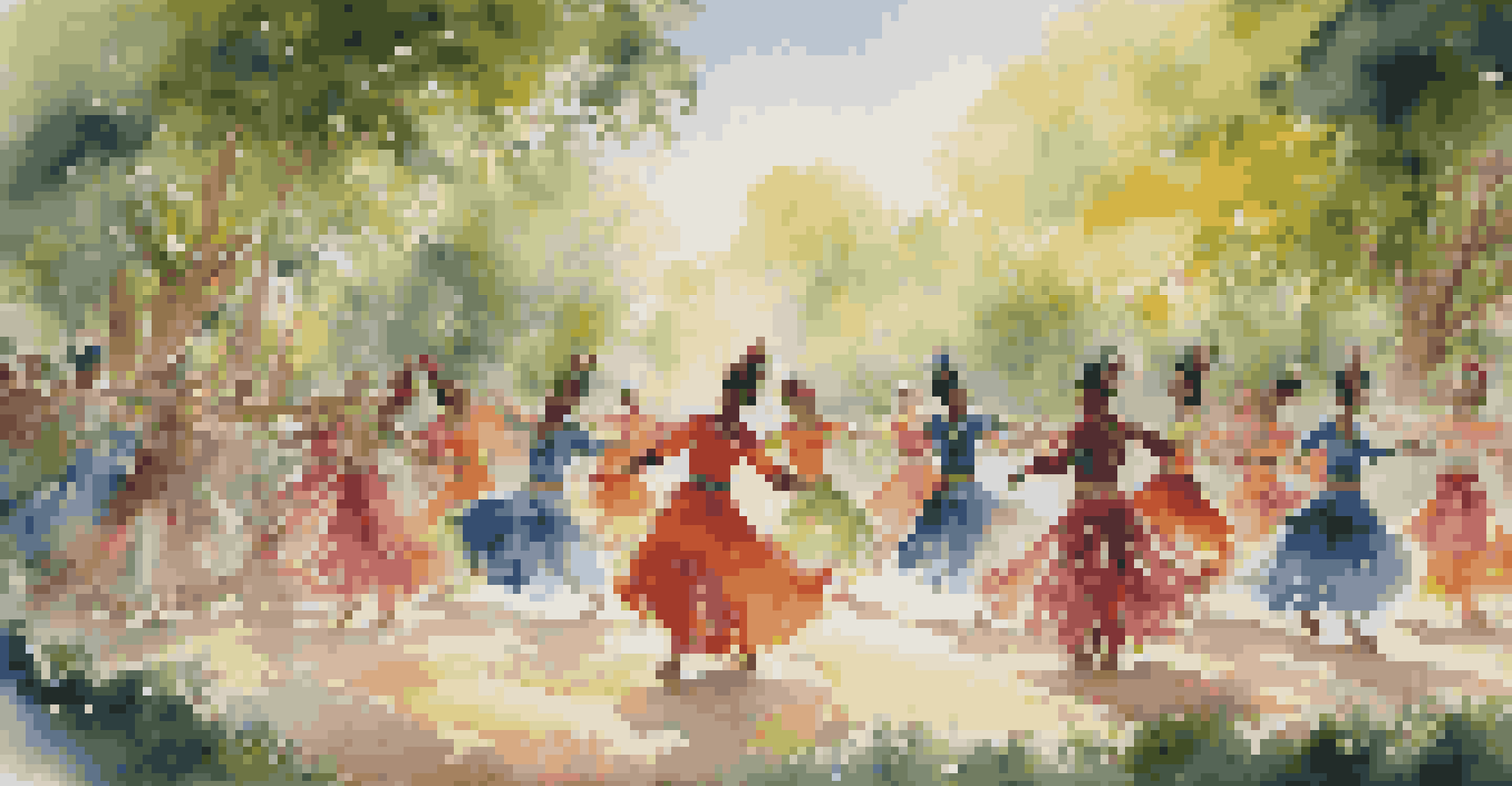Cultural Appropriation and the Influence of Pop Culture

Defining Cultural Appropriation in Modern Society
Cultural appropriation refers to the adoption of elements from one culture by members of another culture, often without permission or understanding. This can include fashion, music, language, and food, among other aspects. While cultural exchange can be positive, appropriation often involves power dynamics where dominant cultures exploit marginalized ones.
Cultural appropriation is the act of taking or using elements from a culture without permission or understanding, often leading to disrespect and commodification.
In pop culture, this phenomenon frequently appears in music, film, and fashion, where artists and brands may borrow from cultures without acknowledging their origins. For instance, when a celebrity dons traditional attire as a costume rather than as a respectful homage, it raises questions about intent and respect. Understanding these dynamics is essential to fostering a more inclusive cultural landscape.
Ultimately, recognizing cultural appropriation helps us appreciate the richness of diverse cultures while emphasizing the importance of context and consent. This understanding can lead to more meaningful cultural exchanges that celebrate rather than exploit.
Examples of Cultural Appropriation in Pop Culture
One of the most talked-about instances of cultural appropriation occurred when major fashion brands used Native American headdresses as fashion accessories. This not only disrespects the cultural significance of such items but also reduces them to mere commodities. Similarly, the music industry has seen various artists adopt elements of Black culture without acknowledging their roots, leading to public outcry.

Another example is the appropriation of traditional Asian clothing by Western celebrities, who may wear them for aesthetic appeal without understanding their cultural significance. This raises awareness about how cultural symbols can be misused, often sidelining the voices of those who originate from those cultures.
Understanding Cultural Appropriation
Cultural appropriation involves adopting elements from another culture without permission or understanding, often highlighting power imbalances.
These examples illustrate that cultural appropriation isn't just a theoretical concept; it's a real issue that affects communities. By highlighting these instances, we can spark conversations about respect, understanding, and the impact of our choices in pop culture.
The Fine Line Between Appreciation and Appropriation
Understanding the difference between cultural appreciation and cultural appropriation is crucial. Appreciation involves recognizing and honoring the significance of a culture, often through engagement and collaboration with its members. For example, learning traditional dance from its cultural origin can be seen as appreciation, provided that it's done respectfully and with permission.
The biggest part of cultural appropriation is taking something from another culture, using it, and then not giving credit to where it comes from.
On the other hand, appropriation often strips cultural elements of their meaning, leading to commodification. Think of it this way: borrowing a friend's sweater is fine, but wearing it without acknowledging your friend or their style is disrespectful. This metaphor highlights the importance of context and respect in cultural exchanges.
Ultimately, fostering appreciation over appropriation requires open dialogue, education, and a willingness to listen. By engaging authentically with cultures we admire, we can build bridges instead of barriers.
Pop Culture's Role in Shaping Perceptions of Culture
Pop culture plays a significant role in shaping how we perceive different cultures, often acting as a lens through which we view the world. Movies, music, and fashion can either promote understanding and respect or perpetuate stereotypes and misunderstandings. For instance, films that portray diverse cultures authentically can foster empathy and appreciation, whereas those that rely on clichés can reinforce negative stereotypes.
Additionally, social media amplifies these messages, providing a platform for both cultural exchange and cultural appropriation. Viral trends can sometimes lead to a superficial understanding of cultures, where the focus is on aesthetics rather than meaning. This makes it crucial for creators and consumers alike to navigate these spaces thoughtfully.
Pop Culture Influences Perceptions
Pop culture shapes how we view cultures, either promoting understanding or perpetuating stereotypes through media and social platforms.
In navigating pop culture, we must remain aware of the narratives being constructed. By supporting creators who honor their cultural roots, we can help shift the narrative towards one that celebrates diversity.
The Impact of Social Media on Cultural Appropriation
Social media has transformed how cultural appropriation is discussed and addressed. Platforms like Twitter and Instagram allow for immediate feedback and dialogue, giving a voice to those who feel marginalized. This accessibility can empower communities to speak out against appropriation and advocate for cultural respect.
However, social media can also amplify appropriation when trends go viral without context. For instance, a dance challenge inspired by a cultural tradition may overlook its origins, leading to a lack of understanding among participants. This highlights the double-edged sword of social media's influence on culture and appropriation.
Navigating this landscape requires critical thinking and a willingness to engage in conversations about cultural sensitivity. By leveraging social media for education and awareness, we can foster a more respectful cultural exchange.
How Brands Can Navigate Cultural Sensitivity
Brands play a pivotal role in either perpetuating or combating cultural appropriation. By prioritizing cultural sensitivity, they can build authentic connections with diverse communities. This involves conducting thorough research, consulting cultural experts, and recognizing the significance of the elements they wish to incorporate.
For instance, brands that collaborate with cultural representatives in their campaigns demonstrate respect and understanding. This not only enhances the authenticity of their products but also fosters goodwill among consumers. When brands treat cultural elements as valuable rather than disposable, they contribute to a more inclusive marketplace.
Brands Must Prioritize Sensitivity
Brands can combat cultural appropriation by engaging authentically with cultures, conducting thorough research, and collaborating with cultural representatives.
Ultimately, brands have the power to influence cultural narratives. By choosing to engage thoughtfully, they can help shape a pop culture landscape that celebrates diversity rather than exploits it.
Moving Towards a More Inclusive Cultural Future
Creating a more inclusive cultural future requires collective effort from individuals, brands, and communities. It starts with education—understanding the histories and significances behind cultural elements. This knowledge fosters respect and appreciation, allowing for more meaningful exchanges.
Engaging in open conversations about cultural appropriation is essential. By listening to marginalized voices and advocating for their rights, we can promote a culture of respect and awareness. This is not just about avoiding appropriation; it's about actively celebrating and supporting diverse cultures.

As we move forward, let’s commit to being conscious consumers and creators. By valuing authenticity and representation, we can contribute to a cultural landscape that honors diversity and enriches our shared human experience.